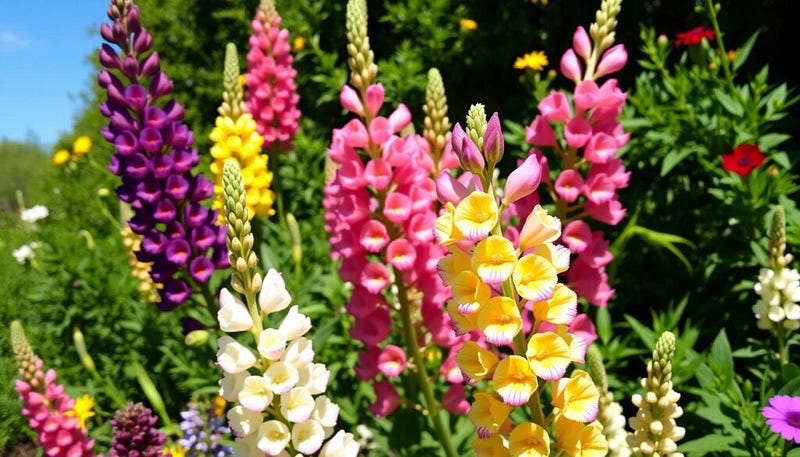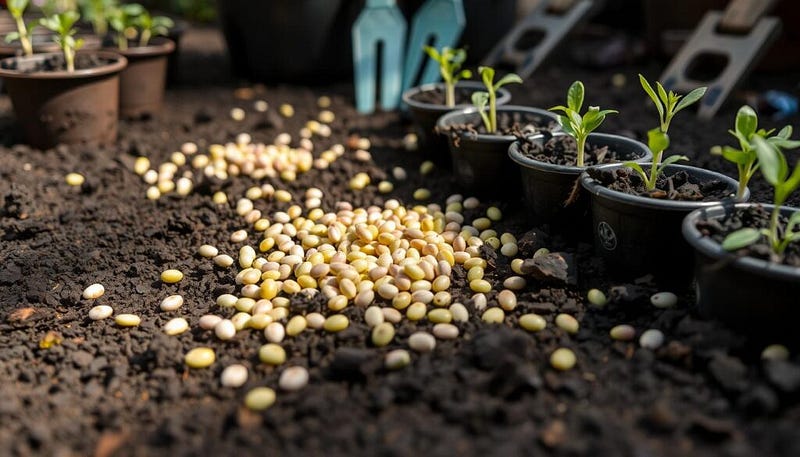
Are you fascinated by the stunning spikes of lupine flowers? These vibrant blooms paint the landscape in a variety of colors. Growing lupines can be a joy, but do you know the secrets to success? Let’s dive into the world of lupines and learn how to grow and care for these beautiful flowers.
Key Takeaways
- Lupines are annuals or short-lived perennials with a lifespan of 2–5 years.
- They thrive in USDA hardiness zones 4–8, requiring at least 6 hours of full sun daily.
- Lupines bloom from late spring to midsummer, producing a variety of flower colors.
- Lupine plants are deer-resistant and beneficial to pollinators, but are toxic to humans and animals.
- Proper soil preparation, watering, and propagation methods are key to successful lupine cultivation.
What is Lupine?
Lupine, also known as lupin or bluebonnet, is a part of the pea family (Fabaceae). It has showy, tall spikes of colorful flowers. This perennial or annual plant grows 3–4 feet tall and 1–1.5 feet wide. Its botanical name is Lupinus x hybrida, a mix of native lupine species.
Common Names and Botanical Details
Lupines are from North America and are known by many names like lupine, lupin, and bluebonnet. The Lupinus genus has over 199 species. These plants can be herbaceous perennials or shrubs up to 3 meters tall.
The taxonomy of lupines is complex. Estimates say there are between 200 and 500 species worldwide.
“The term ‘lupine’ comes from the Latin word ‘wolf’ (lupus), reflecting the wolfish characteristics of lupine groups.”
Lupine seeds are used for green manure, fodder, and as food. They are also grown as ornamental flowers. Their vibrant blooms come in colors like blue, purple, white, and yellow.
Lupine Flower Colors and Hardiness Zones
Lupine flowers are known for their bright and varied colors. They can be white, pink, red, yellow, blue, or purple. Some even have bicolor or multicolor petals, making them even more beautiful.
Lupines also have a lovely scent and bloom in spring and summer. They can start blooming as early as April or as late as August. This means they add beauty to your garden for a long time.
Lupines grow well in USDA Hardiness Zones 4–8. But, some types can be grown as annuals in warmer places or as perennials in colder areas. It’s important to pick lupine varieties that fit your local climate for the best results.
There’s a lupine for every garden and taste. They come in classic blues, vibrant reds, and soft pastels. With their colors, scent, and hardiness, they’re a must-have for flower lovers.

Growing Lupine From Seed
Lupines are beautiful flowers that can brighten up your garden. They’re easy to grow from seed, but it might take up to two years for them to bloom. To grow lupines successfully, follow a few key steps for starting and transplanting seeds.
Seed Starting and Transplanting Tips
Lupine seeds have a hard outer layer that needs to be nicked or soaked for germination. Plant them about 1/4 inch deep in soil that drains well. They should sprout in 14–30 days.
But, lupines don’t transplant well because of their long taproots. It’s best to plant them directly in their garden spot.
If you want to pot up lupine seedlings first, that’s okay too. Just pot them up in the spring before moving them outside. This helps them develop a strong root system before transplanting.

Whether you start them in pots or directly in the garden, be patient. Lupines may take a year to bloom fully. With care and patience, you’ll enjoy their vibrant colors in your garden.
Planting and Site Selection
When growing lupines, choosing the right spot is crucial. They love full sun, needing at least six hours of direct sunlight each day. They thrive in loose, well-draining soil that’s slightly acidic. But they can also handle more neutral or slightly alkaline conditions.
Before planting, adding compost to heavy clay soils can help. It improves drainage and creates a perfect spot for these colorful flowers.
It’s also important to space lupine plants correctly. Depending on the type, they should be 1–3 feet apart. This allows for good air circulation and growth. It also prevents problems like powdery mildew and lets the plants reach their full height.







